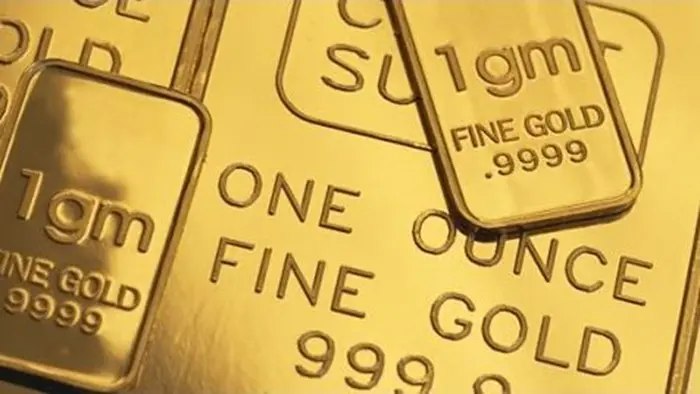Gold has fascinated humanity for millennia, prized for its beauty, rarity, and intrinsic value. Throughout history, gold has been a symbol of wealth, power, and prosperity. But what does real gold actually look like? Recognizing genuine gold, whether in its natural form or as a refined product, is crucial for investors, jewelers, and enthusiasts alike. This article will explore the physical characteristics of real gold, how it can be distinguished from fake or impure versions, and its significance in various fields.
Understanding Gold’s Unique Properties
Gold is a chemical element with the symbol Au and atomic number 79. It is one of the least reactive chemical elements and is solid under standard conditions. Gold’s unique properties make it highly sought after, not only for jewelry and currency but also for industrial applications.
Key Characteristics of Real Gold
Color: Gold is renowned for its distinctive yellow color. In its pure form, gold has a bright, metallic luster and a yellow hue that does not tarnish or fade. The color of gold can vary slightly depending on its purity, with pure gold (24 karats) having the most intense yellow hue.
Density: Gold is a dense metal, with a specific gravity of approximately 19.3. This means that gold is significantly heavier than most other metals. For example, a gold bar will feel much heavier than a bar of the same size made from a different material, like iron or copper.
Malleability: One of gold’s most remarkable properties is its malleability. Gold is the most malleable of all metals, meaning it can be hammered or rolled into very thin sheets without breaking. This property is evident in gold leaf, which can be beaten into sheets so thin that they become translucent.
Ductility: Gold is also highly ductile, meaning it can be drawn into thin wires. A single ounce of gold can be stretched into a wire over 50 miles long. This property is utilized in electronics, where gold wiring is used for its excellent conductivity and resistance to corrosion.
Conductivity: Gold is an excellent conductor of electricity and heat. While it is not the best conductor (copper and silver surpass it), gold’s resistance to corrosion and tarnish makes it ideal for use in electrical contacts and connectors.
Identifying Real Gold
Recognizing real gold involves understanding these properties and knowing how to test for them. Whether you are handling gold in its natural form, as a piece of jewelry, or as a gold coin, there are several ways to determine its authenticity.
1. Visual Inspection
One of the simplest methods to identify real gold is through visual inspection. Real gold has a distinctive yellow color that is difficult to replicate. However, some metals like brass can be mistaken for gold due to their similar appearance. To differentiate real gold from imitations, it’s important to look for the following:
Stamp or Hallmark: Most gold jewelry and bullion are stamped with a hallmark that indicates the purity of the gold. Common hallmarks include “24K” for pure gold, “18K” for 75% gold, or “14K” for 58.3% gold. These stamps are usually located in inconspicuous areas, such as the inside of a ring band.
Wear and Tear: Over time, the gold layer on gold-plated items can wear off, revealing the base metal underneath. Real gold, being solid throughout, does not have this issue. Additionally, real gold is resistant to tarnishing and corrosion.
2. The Acid Test
The acid test is a reliable method to determine the purity of gold. This involves applying a small drop of nitric acid to the gold item. Real gold will not react to the acid, while base metals will change color or dissolve. For this test, it’s advisable to use testing kits that include acids of different strengths to test for various purities (e.g., 10K, 14K, 18K, etc.).
3. Density Test
As previously mentioned, gold is a very dense metal. A simple density test can help confirm whether an item is made of real gold. To perform this test:
Weigh the gold item using a precise scale.
Fill a graduated cylinder with water and note the initial volume.
Submerge the gold item in the water and note the new water level.
Calculate the volume of water displaced by the item (final volume – initial volume).
Divide the weight of the gold by the volume of water displaced to obtain the density.
If the density is close to 19.3 grams per cubic centimeter, the item is likely real gold.
4. Magnetic Test
Gold is a non-magnetic metal. If you hold a magnet near a gold item and it is attracted to the magnet, the item is not pure gold. However, this test alone is not definitive because some base metals used in fake gold items are also non-magnetic.
5. Ceramic Scratch Test
This test involves rubbing the gold item on an unglazed ceramic surface. Real gold will leave a gold streak on the ceramic, while a fake item will leave a black or gray streak. This test should be performed carefully, as it can potentially damage the gold item.
6. Professional Assays
For a definitive analysis, a professional assay can determine the exact composition of a gold item. Assayers use techniques such as fire assay, X-ray fluorescence (XRF), or inductively coupled plasma mass spectrometry (ICP-MS) to analyze the metal. While these methods are more expensive and time-consuming, they provide highly accurate results and are commonly used by jewelers, refiners, and investors.
Real Gold in Its Natural State
Gold is often found in nature in a native (pure) form, as nuggets, grains, or flakes. The appearance of natural gold can vary depending on its geographical location and the other minerals present.
1. Gold Nuggets
Gold nuggets are lumps of native gold that have been weathered from gold-bearing rock and transported by water to streams or rivers. Nuggets are typically irregular in shape, with a bright yellow color. They can range in size from tiny grains to large, multi-ounce pieces. The surface of a gold nugget may be rough or smooth, depending on how far it has been transported.
2. Gold Dust and Flakes
Gold dust and flakes are smaller particles of gold that have been eroded from larger pieces. These particles are often found in alluvial deposits, where they have been washed down from higher elevations by rivers. Gold dust is typically a bright, yellowish-brown color, and it will settle to the bottom of a pan when panning for gold.
3. Gold Veins
Gold veins are formed when molten gold is forced into cracks in the earth’s crust. These veins can be found in quartz rock and other mineral formations. When exposed through mining or erosion, these veins can appear as streaks of gold embedded in the rock. The gold in veins is often associated with other minerals, such as silver or copper, which can affect its color and appearance.
See Also: How Many Ounces Is a Gold Bar?
Real Gold in Jewelry
Gold jewelry is one of the most common and recognizable forms of gold. However, not all gold jewelry is made from pure gold. Understanding the different types of gold used in jewelry can help you identify real gold and assess its value.
1. Pure Gold (24K)
24-karat gold is considered pure gold, containing 99.9% gold with minimal impurities. It has a bright yellow color and is highly malleable, making it ideal for fine, intricate jewelry. However, because of its softness, 24K gold is not commonly used for everyday jewelry, as it can easily scratch or bend.
2. Gold Alloys
To increase the durability and hardness of gold jewelry, pure gold is often alloyed with other metals. The most common gold alloys are:
18K Gold (75% Gold): Contains 75% gold and 25% other metals, such as copper, silver, or zinc. It retains a rich yellow color while being more durable than pure gold.
14K Gold (58.3% Gold): Contains 58.3% gold and 41.7% other metals. It is more affordable and durable than higher karat golds but still retains a warm yellow hue.
10K Gold (41.7% Gold): Contains 41.7% gold and 58.3% other metals. It is the most durable and least expensive form of gold jewelry but has a paler yellow color.
3. White Gold
White gold is an alloy of gold and white metals like palladium, nickel, or silver. It has a silvery-white appearance, which is often enhanced by plating the jewelry with rhodium. White gold is popular for wedding bands and engagement rings due to its modern look and durability.
4. Rose Gold
Rose gold is an alloy of gold and copper, giving it a distinctive pinkish-red hue. The higher the copper content, the more pronounced the color. Common alloys include 18K rose gold (75% gold, 25% copper) and 14K rose gold (58.3% gold, 41.7% copper). Rose gold has gained popularity in recent years for its unique and romantic appearance.
5. Gold-Plated and Gold-Filled Jewelry
Not all gold-colored jewelry is made from real gold. Gold-plated jewelry is made by applying a thin layer of gold over a base metal, such as brass or copper. Gold-filled jewelry has a thicker layer of gold bonded to the base metal, making it more durable and valuable than gold-plated items. However, both types of jewelry have significantly less gold content than solid gold pieces and are less valuable.
The Value of Real Gold
Gold has been a store of value for centuries, and its worth extends beyond its physical appearance. Understanding the factors that determine the value of gold is essential for investors and collectors.
1. Purity and Weight
The value of gold is directly related to its purity and weight. Pure gold (24K) is more valuable than gold alloys, and the price of gold is often quoted in terms of price per ounce or gram. When purchasing gold, it’s important to know the exact weight and purity of the item, as this will determine its market value.
2. Market Price
The price of gold fluctuates based on global economic conditions, supply and demand, and geopolitical factors. The market price of gold is often expressed in terms of the spot price, which is the current price at which gold can be bought or sold for immediate delivery. Investors should keep an eye on the spot price when buying or selling gold.
3. Historical and Cultural Significance
In addition to its intrinsic value, gold often carries historical or cultural significance that can enhance its worth. Antique gold jewelry, gold coins from historical periods, and gold artifacts from ancient civilizations are often more valuable due to their rarity and historical importance.
Conclusion
Recognizing real gold requires an understanding of its unique properties, such as its color, density, malleability, and ductility. Various tests, from simple visual inspections to professional assays, can help confirm the authenticity of gold. Whether found in its natural state, as a refined product, or as part of a jewelry piece, real gold is a valuable and timeless asset. Its value is determined by factors such as purity, weight, and market conditions, making it essential for investors and collectors to understand what real gold looks like and how to verify its authenticity. By appreciating the characteristics and significance of gold, one can make informed decisions when buying, selling, or collecting this precious metal.
[inline_related_posts title=”You Might Be Interested In” title_align=”left” style=”list” number=”3″ align=”none” ids=”3335,3268,3199″ by=”categories” orderby=”rand” order=”DESC” hide_thumb=”no” thumb_right=”no” views=”no” date=”yes” grid_columns=”2″ post_type=”” tax=””]































